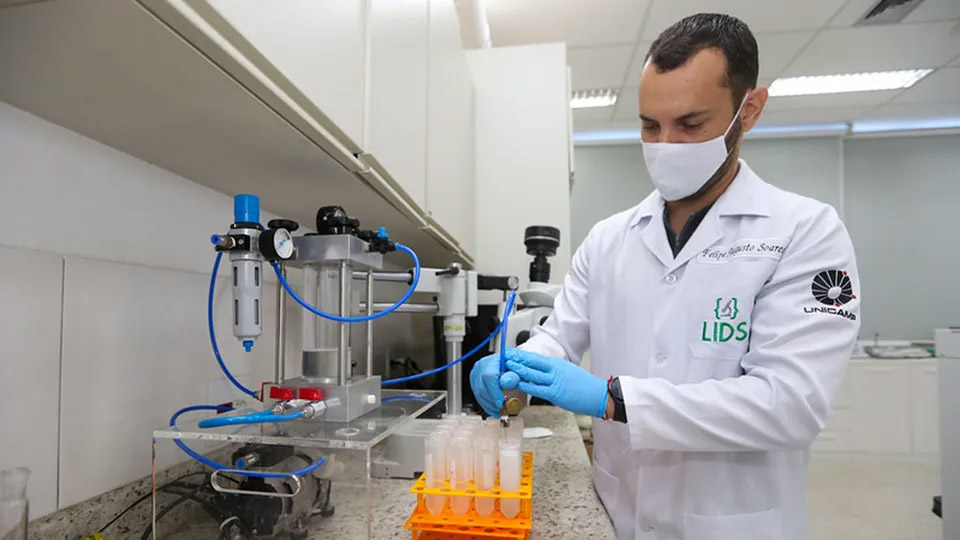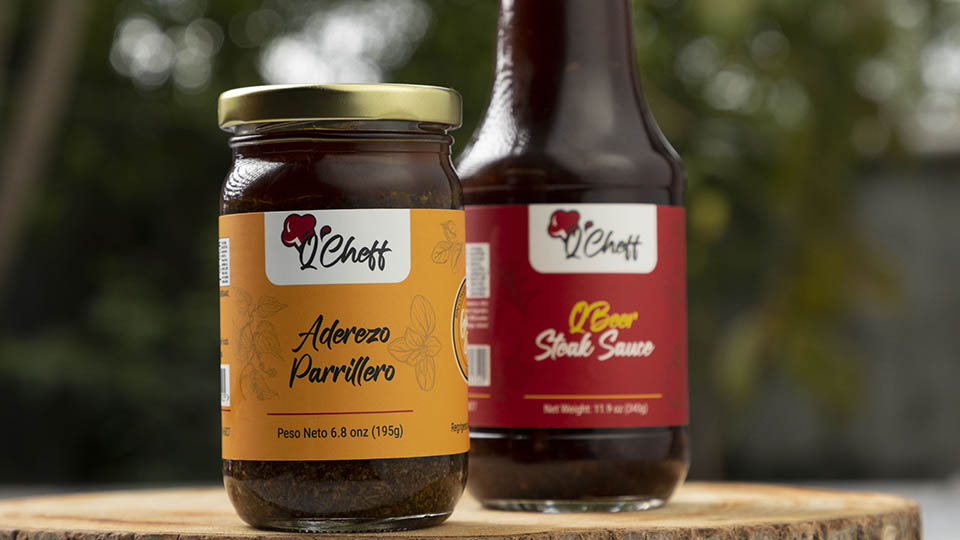National Integrated Research Program on Medicinal Plants, Philippines
In 1974, the University of the Philippines Manila (UPM), several other universities and governmental research agencies working under the Department of Science and Technology (DOST) of the Republic of the Philippines (the Philippines) collaborated on the formation of the National Integrated Research Program on Medicinal Plants (NIRPROMP), with a mandate to distribute inexpensive medicine to the poor, to propagate the use of herbal preparations with proven medicinal efficacy and identify scientifically validated medicine that would improve the Filipino pharmaceutical industry. NIRPROMP was established to address the rising costs of imported pharmaceutical products, especially those used for frequent ailments such as the common cold, fever and headaches. At the time, the Philippine pharmaceutical industry was not self-sustaining in these medicines, and companies were spending approximately 150 million Philippine pesos (around US $22 million at the time) annually to import medicine. These imported medicines were also prohibitively expensive and out of the reach of many patients. With this in mind, NIRPROMP prioritized reducing the country’s dependence on imports and offering people more affordable pharmaceutical products through locally developed herbal medicine.

One such innovation came in 1995, when NIRPROMP isolated vitex negundo, a large, hardy, five-leaved aromatic shrub with bluish-purple flowers, as a natural source for developing an effective herbal medicine. Known in the Philippines as lagundi, the plant thrives in both humid and arid regions throughout Africa and Asia and has been used by local populations for hundreds of years to effectively treat wounds, headaches, ulcers, skin diseases, diarrhea, and the common cold, among many others. After successfully scientifically identifying the medicinal properties of each part of the plant, NIRPROMP developed a lagundi-derived formula for a clinically proven cough and asthma medicine in tablet and syrup form.
Traditional knowledge
Lagundi has been used for centuries by local populations in the Philippines for its medicinal properties, but these were not described in detail until a book by Spanish Jesuit Father Colin that was published in 1900. In his book, Father Colin wrote that lagundi was used regularly by Filipinos to treat wounds and as a pain medication. In addition, he also found that they had vast traditional knowledge on the different medicinal properties of each part of the plant. For example, while leaves are commonly used to ease headaches and cleanse ulcers, seeds are used to treat skin diseases. The plant’s flowers are used to treat numerous diseases such as diarrhea and cholera, and its black fruit is dried and eaten to alleviate and regulate intestinal discomfort. Finally, Father Colin discovered that the plant’s roots are used to treat rheumatism and dysentery. This traditional medicinal knowledge surrounding lagundi is commonly disseminated through herbolaryos – traditional healers who use their traditional knowledge to prepare and administer herbal medicine. Herbolaryos have served as authority figures on medicine in many local Filipino communities for generations, and have enjoyed a great deal of respect and trust among many communities in the country.
Research and development
The development of modern lagundi-based medicine was the result of the herbal medicine research and development (R&D) that has been continuously undertaken by NIRPROMP. Headed by researchers primarily from UPM including Dr. Nelia Maramba and Dr. Conrado Dayrit, R&D focused on clinically validating traditional medicine such as lagundi for use in the development of symptomatic drugs (treatment that focuses on the symptoms of an ailment, not the cause). This is done through isolating the active ingredient and then developing the associated drug. When research started, lagundi was not at the top of the list of potential candidates. In fact, after an initial review of various research projects focusing on traditional medicine in the Philippines alone, the R&D team discovered over 500 projects related to isolating active ingredients in plants, none of which had been successfully commercialized.

Dr. Dayrit suspected that one of the main reasons why these active ingredients were never commercialized into a product was because consumers were generally unaware of the plants from which they originated and how the ingredients were prepared into an herbal drug. Dr. Dayrit felt that this lack of knowledge bred distrust among consumers of companies trying to develop new drugs based on relatively unknown plants, and that R&D should be focused only on traditional medicine based on plants that are well known and trusted among the population. After conducting a survey of consumers, the research team learned that although people generally do not trust medicine based on a plant they were unaware of and manufactured by an unknown company, many do trust herbolaryos. The R&D focus therefore shifted from journal articles of various research programs to herbolaryos, and NIRPROMP started collecting folkloric data and conducting scientific tests to validate the herbolaryos’ claims.
With the help of the National Science and Technology Authority of the University of the Philippines Los Baños, from 1977 to 1982 NIRPROMP conducted a detailed survey of herbolaryos to identify those herbal preparations that have promising medicinal properties. The survey included interviews with 1,000 herbolaryos and had detailed accounts of the herbs they used and any side effects caused. Out of the 1,500 plants identified, NIRPROMP scientifically validated that 480 of them contained beneficial medicinal properties.
Another R&D project was carried out in tandem and based on the information provided by the herbolaryos. Members of this project poured over the records of the Department of Health to find out the leading cause of morbidity at the time. The gathered data was used to prioritize the symptoms and/or diseases that herbal medicine would have the best potential to treat. Researchers discovered that respiratory problems were among the most common symptoms that held the potential to be treatable with traditional medicine.
Armed with this cache of data, the researchers developed five criteria with which to test plants against: safety, efficacy, quality, availability of raw material, and propagation studies of the raw herbs. The first three criteria were necessary to ensure that the medicine would be safe and effective, while the last two would ensure the sustainability of the supplies for R&D, clinical trials and eventual commercialization. Long and detailed testing of each of the 480 plants ensued, and NIRPROMP identified ten plants that were scientifically validated as safe, effective and sustainable.
Lagundi was one of these ten plants, and because respiratory problems were a primary concern among the population, it was chosen to be the basis for a medicine to alleviate cough and asthma symptoms. The beneficial properties of lagundi were first recognized during the survey of the herbolaryos, in which 70% of them vouched for the plant’s efficacy in treating cough. The lack of any reports of adverse side effects bolstered their claims, and the abundance of the plant throughout the Philippines made lagundi R&D even more attractive.
Through scientific and clinical tests, the research team identified four active ingredients of lagundi and found the effect of each: (1) as a relaxant of the air passages in the lungs; (2) as an anti-histamine; (3) as an anti-inflammatory; and (4) as an anti-asthmatic. While each ingredient acted weakly when administered on its own, they produced a powerful cough suppression effect when used together, and without any adverse side effects. With these promising results in hand, NIRPROMP developed a lagundi-based cough medicine in tablet form and launched clinical trials in the late 1980s, with 119 patients suffering from mild to moderate cough participating. Each patient was given either a placebo or the lagundi medicine, and those who received the lagundi medicine exhibited substantial positive medical responses without any adverse reactions or side effects. By 1993, researchers had successfully developed a lagundi-based cough medicine in tablet form. In October 1995, the Philippine Department of Health released a list of officially endorsed plants that exhibit effective natural medicinal properties with proven therapeutic value. Lagundi was among the plants listed, along with the nine other plants NIRPROMP isolated through its earlier R&D.

Invention
Following the successful development of lagundi cough tablets, NIRPROMP researchers worked to also develop the medicine in a syrup form. Children and the elderly make up a significant portion of the demand for cough medicine, but tablets can be difficult for them to take. In 1999, NIRPROMP successfully altered the formulation for lagundi cough tablets into a lagundi cough syrup, which retains all the medicinal properties of the tablets, but is in a form that is easier to administer.
The new syrup formulation uses decoction to extract the organic compounds from lagundi leaves. Decoction involves drying the lagundi leaves and grinding them through a mesh until a fine powder is formed. Distilled water is then added to moisten this powder, and it is then boiled for approximately fifteen minutes with occasional stirring in a low to medium heat (which prevents possible degradation of the active ingredient). The resulting lagundi decoction is set aside to cool and then filtered or strained. Sucrose is then dissolved in the prepared decoction using a turbine mixer, after which the compound is aged for about three days. A small amount of methyl and propylparaben (a preservative) is ground into a fine powder, and propylene gylco (an organic compound used as a solvent) is added until the propylparaben is completely dissolved. This is introduced into the aged sucrose and lagundi decoction compound. After mixing well, a small amount of citric acid and orange oil is added. Lastly, a sufficient amount of distilled water is mixed in to obtain the required volume. This is thoroughly mixed together until a syrup solution is formed in the appropriate consistency.
Utility model
Because NIRPROMP’s research was funded by DOST and was a collaboration between UPM and PCHRD, a sectoral council of DOST, all intellectual property (IP) is managed and owned by DOST. In order to protect the IP behind lagundi cough syrup formula and promote commercialization, in 1999 DOST therefore applied for a utility model with the Intellectual Property Office of the Philippines (IP Philippines) for an herbal pharmaceutical composition that is based on lagundi. The utility model was approved and issued in February 2001.
Licensing and commercialization

member of NIRPROMP
Although NIRPROMP was responsible for the R&D and clinical trials of the lagundi cough medicine in tablet form, PCHRD was responsible for coordinating and facilitating commercialization. When the lagundi cough tablet formulation was ready for commercialization, PCHRD organized informational forums to gauge interest from local pharmaceutical companies. Many of them expressed interest and as such in 1993 PCHRD developed and announced a non-exclusive licensing agreement system. Under this agreement, the licensee pays an upfront fee for the technology and royalties based on gross revenues less value added tax and the typical volume discount given to large drug store chains. As the funding entity of PCHRD and NIRPROMP, all royalties and fees are paid to DSOT. Each licensee is responsible for registering their derived products with the Philippine Food and Drug Administration (then known as the Bureau of Food and Drugs). An important part of the license is the provision of the results of the clinical studies which verify the safety and effectiveness of the drug. Without these, the drug cannot be sold as a legal medicine in the Philippines.
The first licensee for the lagundi tablet technology was Herbafarm, a Filipino pharmaceutical company which used lagundi grown from its own farms and at an in-house manufacturing facility at a DOST compound. Herbafarm launched its lagundi products in 1994. Other licensees soon followed, one of which was Pascual Laboratories (Pascual), a large Filipino pharmaceutical company that would go on to become the most successful licensee of lagundi technology. Pascual’s product based on the PCHRD lagundi formula was approved by the Bureau of Food and Drugs in 1996 and continues to be on sale in the Filipino pharmaceutical market.
Despite the successful commercialization of the lagundi cough medicine formulation, it faced numerous difficulties penetrating the market early on. At the time, medical professionals and some in the public did not consider herbal medicine to be an effective form of medical therapy. To counter this problem, Pascual launched a marketing campaign to improve the image of herbal treatments and lagundi cough medicine. The company’s first strategy was to promote the drug to medical practitioners directly, especially those at Rural Health Units (RHUs). RHUs are small government funded clinics in rural areas, and as such they were very open to using lagundi cough medicine because it was developed through a government funded program. To further verify the effectiveness of the drug, in 1997 Pascual submitted it to the International Exhibition of New Products, Inventions and Techniques in Geneva, Switzerland, where it was awarded the silver certificate for R&D. The company took this award back home and used it extensively in advertising and developing awareness, and it helped change the opinions of medical professionals and skeptical consumers.
Pascual and other pharmaceutical companies marketing lagundi cough medicine picked up the pace of their advertising campaigns in the late 1990s and 2000s. By 2006, Pascual was running television commercials during popular morning shows and advertising on the radio and billboards. Other companies followed suit, and their successes increased interest in licensing the technology. In 2009, Herbs and Nature Corporation entered into a licensing agreement and launched its own lagundi cough medicine, and in 2010 New Market Link Pharmaceutical Corporation, Herbcare and Pharmacare all did the same and introduced lagundi cough medicine products to the market.
Trademarks

application (IP Philippines
Application No. 42011000094)
An integral part of the success of the efforts of Pascual and other companies was the renewed brand image they helped create for lagundi, and this was facilitated by the strong brand names the companies created for their respective products. Recognizing the need to protect its popular brand names, in January 2011 Pascual applied for trademarks with IP Philippines for Ascof, Ascof Lagundi, and a stylized logo that includes an image of a lagundi leaf. Pascual’s efforts paid off, as by early 2011 the company’s lagundi cough medicines became the second most popular cough medications in the Philippines. In February 2009, Trevenodd Corporation (Trevenodd), a newcomer to the industry, applied for a trademark registration for its Plemex brand lagundi cough medicine, which was registered in August of that same year.
Technology transfer
Until 2009, the technology for lagundi tablets and syrup was transferred through licensing agreements between PCHRD, a government entity, and the private sector. However, according to Republic Act 10055, otherwise known as the “Philippine Technology Transfer Act of 2009” (the Act), technology developed backed by government funding must be completely transferred to entities such as universities or companies that can translate this technology into useful products and services. The goal of the Act is to promote and facilitate the transfer, dissemination, and effective use, management and commercialization of IP, technology and knowledge resulting from R&D funded by the government for the benefit of the national economy and all Filipino people.
Based on this new policy, PCHRD formally transferred the lagundi cough medicine syrup formula to UPM, which would then be tasked with further R&D, licensing and commercialization activities. In October 2010, Azarias Pharmaceutical Laboratories, Inc. (Azarias) made an application to UPM to become the first licensee of lagundi syrup under this new framework. Following the evaluation and recommendation of PCHRD, the agreement was officially signed in January 2011. The licensing agreement was the first of its kind between a public R&D organization (UPM) and a private corporation (Azarias) in the Philippines since the Act was ratified in 2010.
Business results
When lagundi cough medicine was first launched on the market in 1994, it faced an uphill battle of consumer skepticism. However, through a consecutive series of lucrative licensing agreements and concerted efforts to improve the image of herbal medicine and lagundi derived products, the drug has been a success for the many companies that have commercialized it as well as NIRPROMP, PCHRD and DSOT. This is evident in the rapid increase in royalties received by DSOT, which rose from PHP 160,000 (approximately US $4,000) in 1997 to PHP 9,751,000 (approximately US $210,000) in 2009.
The successful commercialization of lagundi has also been beneficial for the many farmers that grow and sell the shrub to manufacturers. One such example is the case of the lagundi farmers on the southwestern island of Palawan. With the help of a non-governmental organization, the farmers were able to secure a distribution deal with Pascual to produce lagundi. Under the terms of the deal, Pascual lent money to the farmers to install solar powered dryers and mills so that they could produce the lagundi in powdered form. With the help of this new equipment, the farmers were able to produce more lagundi than before and improve their processing ability. Within two years the farmers not only paid Pascual back, but also became an important supplier of lagundi, which significantly improved the livelihood for the farmers, their families and communities.

Championing technology transfer and herbal medicine
Passed down for generations, the traditional knowledge of lagundi has been transformed into a safe, scientifically validated herbal drug. With the help of the Philippine government and collaborations between universities and pharmaceutical companies, the technology was transferred and smart use IP structures such as utility models and trademarks ensured its success. Once only in the domain of herbolaryos, the lagundi plant now uplifts the livelihood of local farmers and brings an affordable, safe and effective medicine for all.



